Have you ran the air pump with the duck weed removed to see the effect of that without the surface gas exchange restriction?
I ended up disassembling both the sensor and the aquarium, so unfortunately there is no update on the aeration effect. However, I do not expect to get very different data from my previous experiment.
I have rebuilt the sensor, and it has now a few modifications:
- I pump water inside the box with the sensors to have faster equilibration with the box air:
- it has an additional O2 sensor now (DFRobot O2 sensor)
- it measures the box parameters only, I am running a separate sensor for the ambient air.
- the MH-Z19 sensor is replaced with SCD41, which has a detection range of up to 40000 ppm instead of 5000 and also measures humidity and temperature (inside the sensor)
First I wanted to also include an ammonia sensor, but if my calculations are right, the 1 ppm air ammonia threshold that these sensors have makes no sense in an aquarium. I would need a few ppm of ammonia in water to be able to detect it.
The water is now pumped from the aquarium through a pipe into a tightly sealed plastic box. The water is then dispersed on a plastic pot scrubber to facilitate the gas exchange, then it flows back to the aquarium:
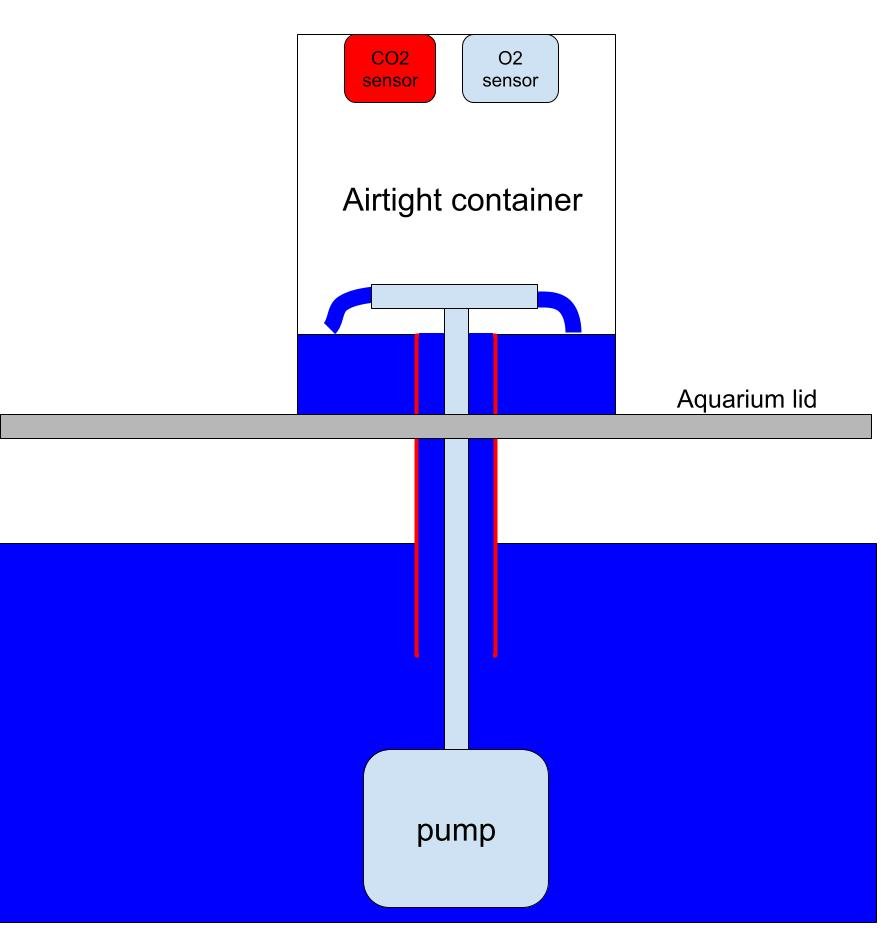
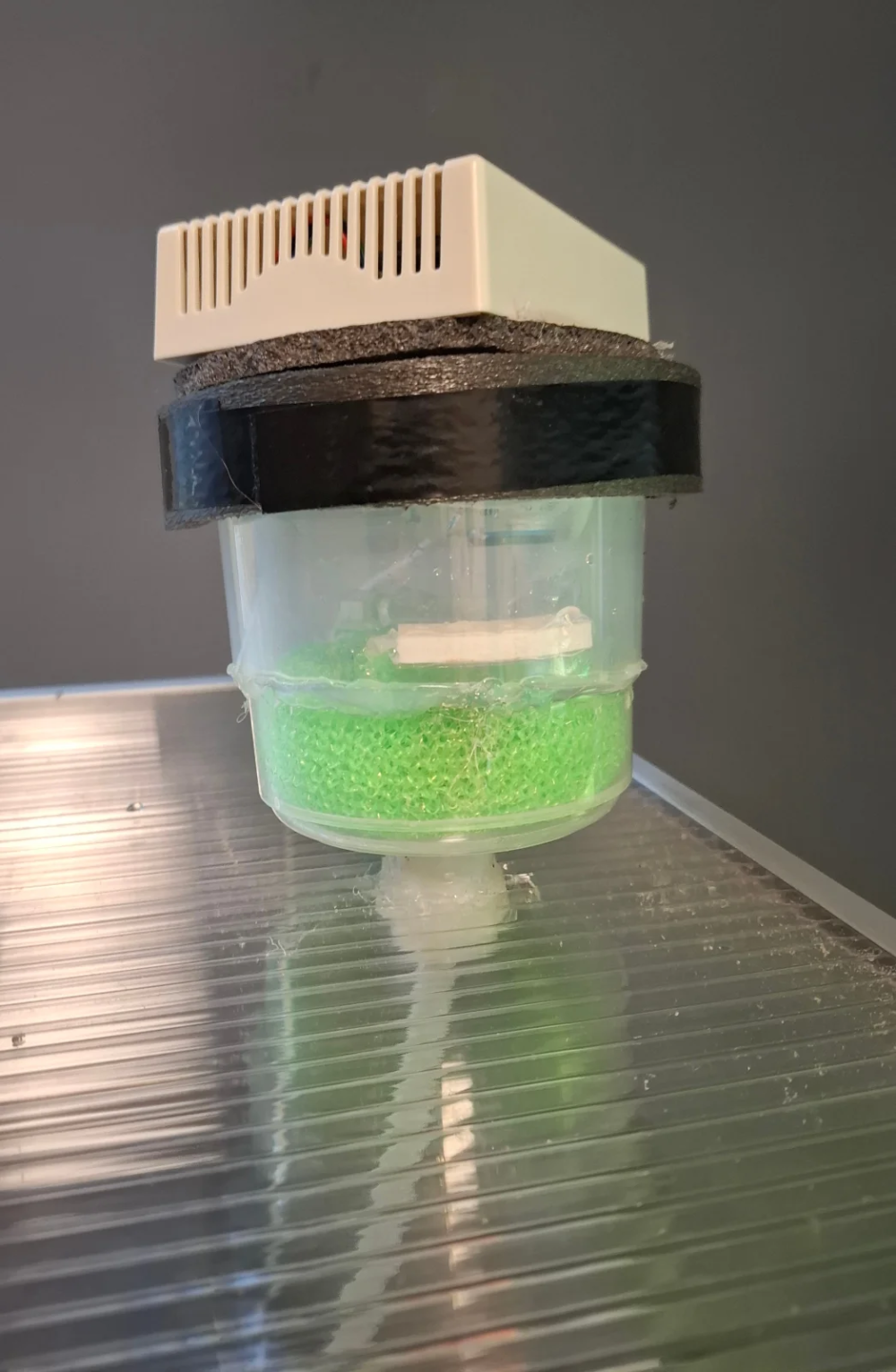
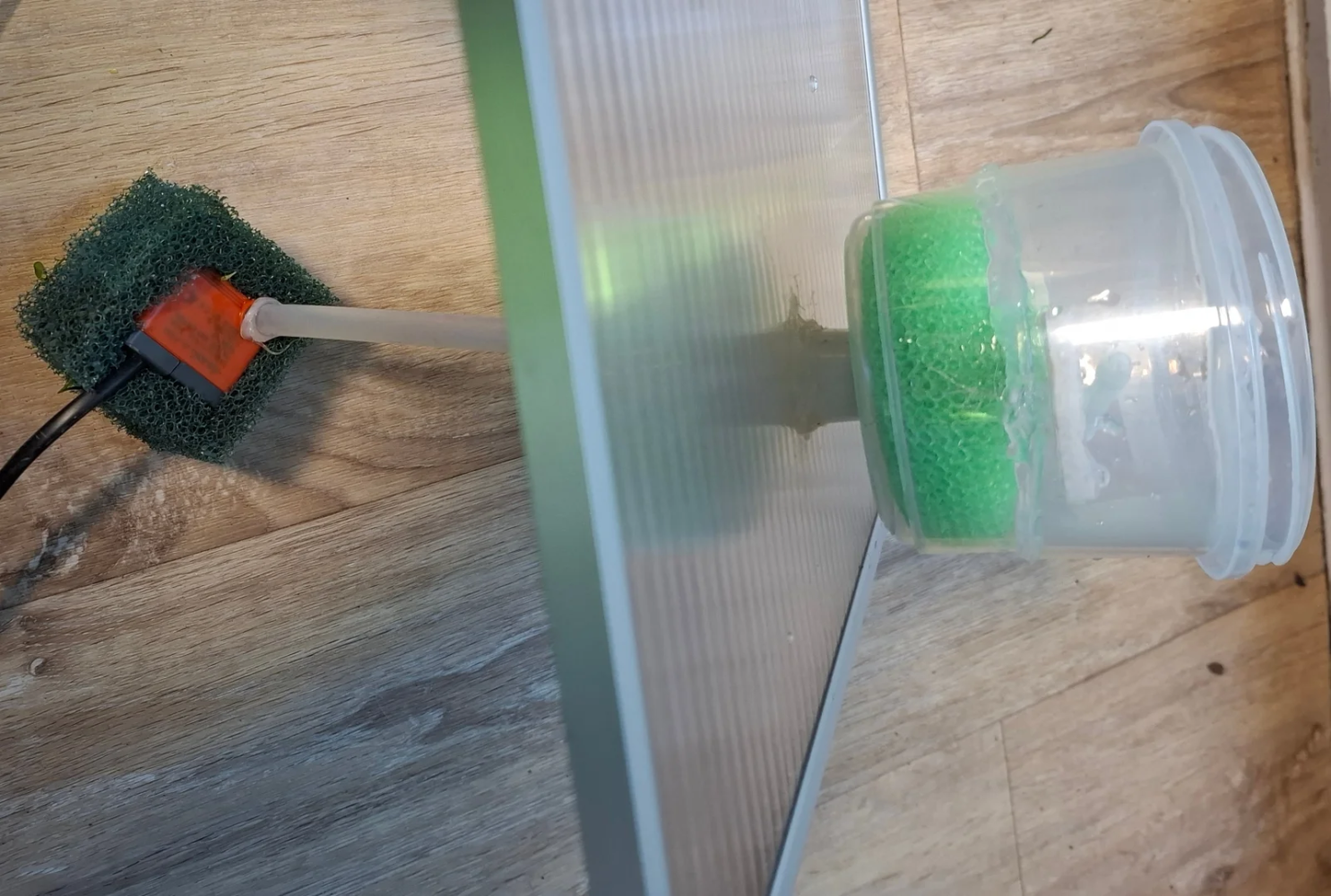
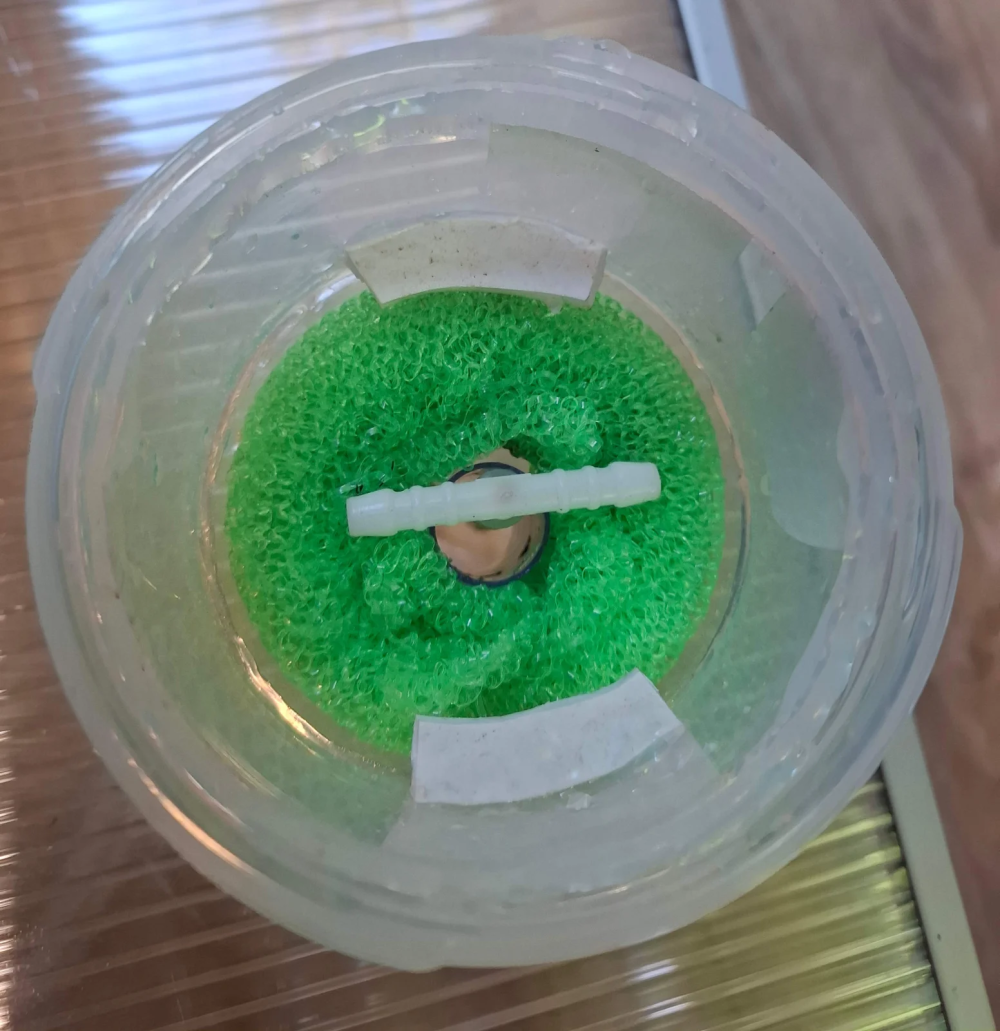
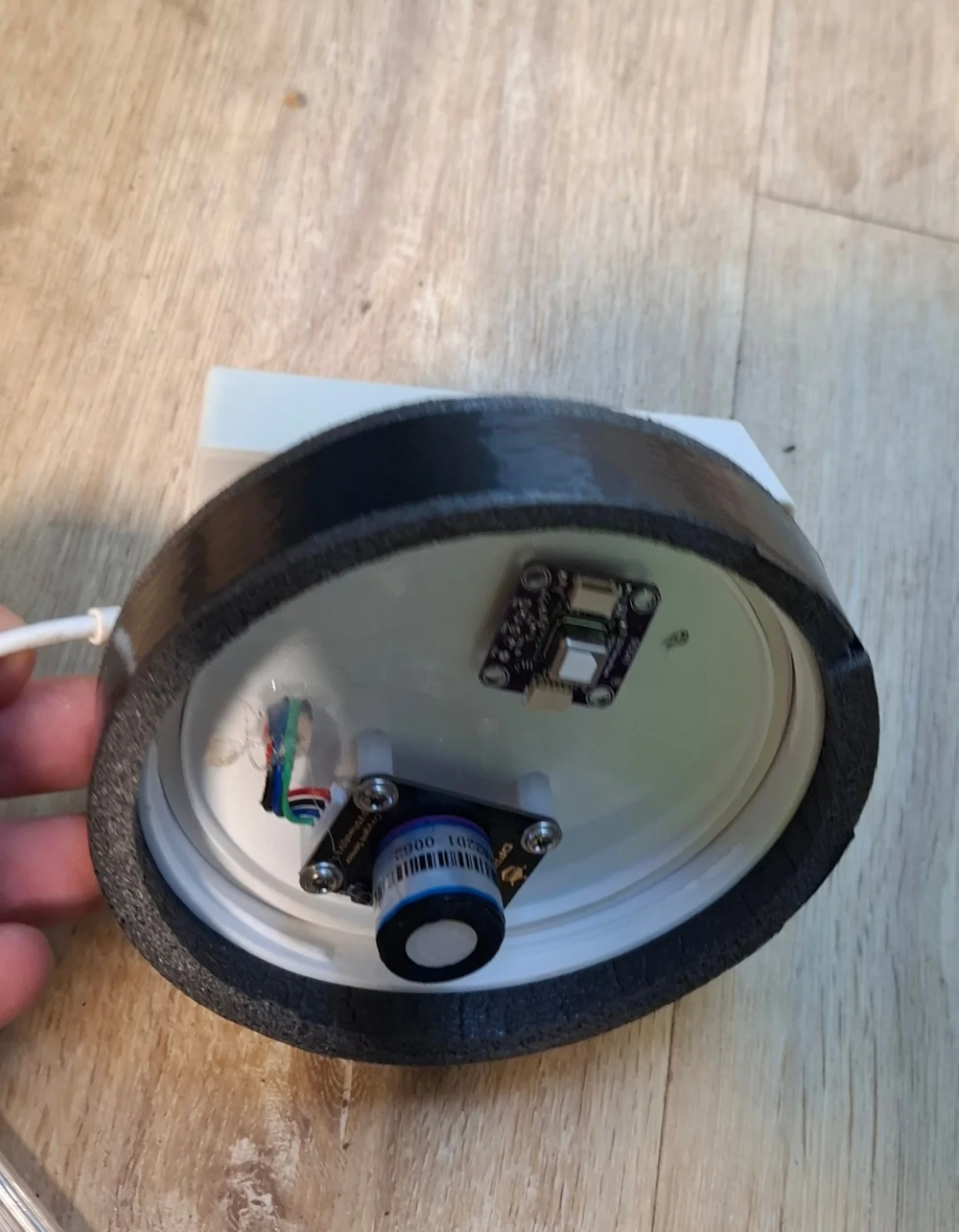
Now with the increased range, I can follow the CO2 changes in my soda-water-supplied aquariums as well. This is what a few days of data look like in this aquarium:
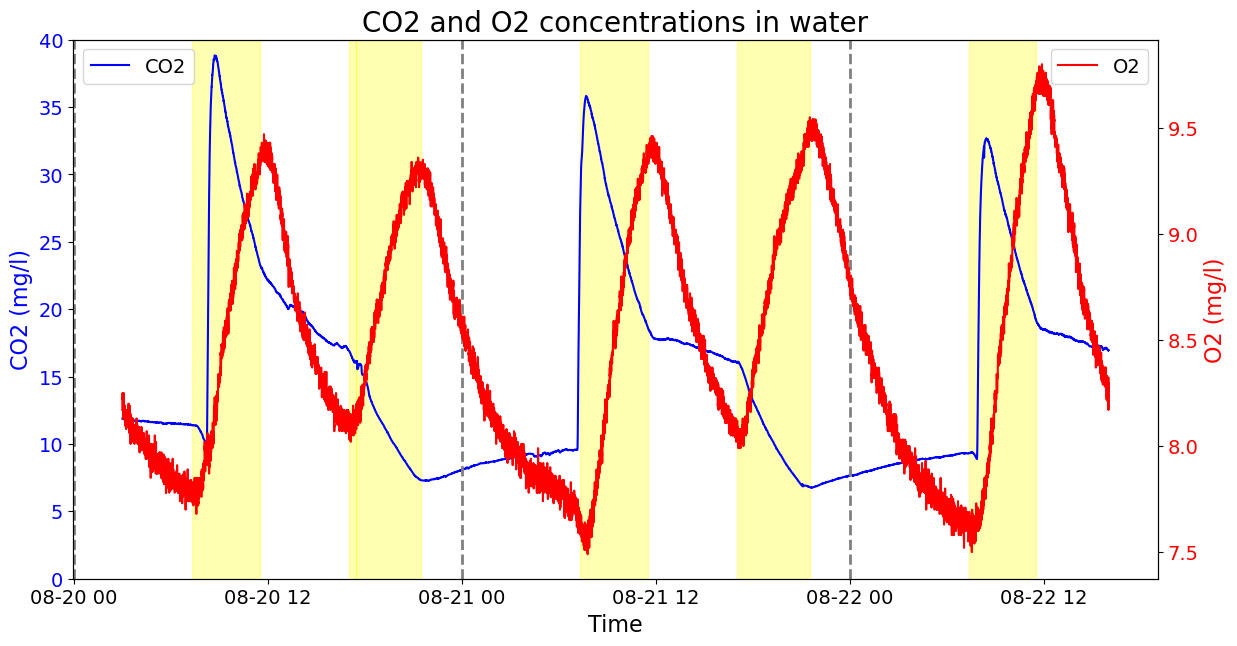
The shown values are calculated from the measured gas concentrations, using the following solubility data (at 25°C):
CO2_solubility = 1449 mg/l/atm
O2_solubility = 40 mg/l/atm
The dashed lines separate days, and the yellow stripes show the photoperiods (two 4-hour periods a day). During the photoperiod, the oxygen levels rise, while they decrease with turned-off lights. The equilibrium with air is about 8.4 ppm, so O2 goes above equilibrium during photosynthesis. CO2 is dosed every morning with soda water, and we can see the changes in the rate of CO2 consumption when the lights are turned up or down.
The aquarium has a lid with a tight fit which slows down the dissipation of the increased CO2 and O2.









